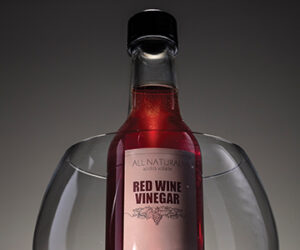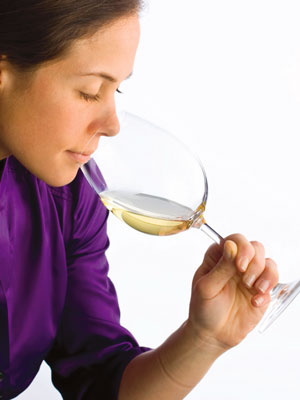Winter is a good time to take a critical look at your cellar techniques. With a nod to the new year and its requisite resolutions, we asked two professional winemakers to discuss common winemaking mistakes and how to avoid or correct them. Here’s to error-free wine in 2003!
Winemaker: Morten Hallgern is a Danish citizen whose family owned a winery in Provence, France for 15 years. He worked for Cordier Estates in Fort Stockton, Texas from 1995-1996, then for Biltmore Estate in Asheville, North Carolina from 1996 until 1999. He has been the head winemaker at Dr. Konstantin Frank Wine Cellar in Hammondsport, New York since 1999.
Lack of sulfur is a common winemaking error. If the sulfur level is too low your wine could oxidize. Also, microorganisms such as Lactobacillus thrive in a low-sulfur environment. These bacteria can contaminate your wine.
It’s critical that you don’t let the sulfur level in your wine drop too low — and the trick is that the “critical level” is different for various wine styles. The sulfur level is dependent on the pH level, and pH values vary by wine style. The pH range for a dry white wine is 3.1 to 3.4, while the pH range for a dry red wine is 3.3 to 3.6. A sweet white ranges from 3.1 to 3.2.
Winemakers should remember that approximately 50 percent of added sulfur dioxide gets bound up with other wine compounds. This means that the amount of S02 you add does not equal the same amount of “free S02” in your wine. Only the free S02 protects your wine from oxygenation and microorganisms.
You should check the free sulfur level of your wine regularly — there’s a very simple test for home winemakers that you should be able to get at your local hobby store. CHEMetrics Titrets is a titration method that will give an accurate sulfur reading. I would consider it an invaluable tool.
You should check free SO2 levels at every step of the winemaking process, especially after fermentation is complete. The production of carbon dioxide during fermentation eliminates the concern of oxidation, and fermentation means the yeast are most active, thus overwhelming foreign bacteria or wild yeast. After fermentation, your wine becomes more vulnerable. I check SO2 once every three weeks before bottling.
If you need to add SO2, many home winemakers use Campden tablets. These tablets contain pre-measured amounts of metabisulfite (usually 0.44 grams of the sodium form). But potassium metabisulfite powder is becoming the preferred choice. The powder must be measured, dissolved in warm water and stirred gently into the wine.
Every wine has different free S02 requirements, but here is an easy rule of thumb. Using the pH number, multiply by 10 to determine the amount of free S02 required for red wines. Add an additional 10 ppm to this number for whites. For example, for a white with a pH of 3.5, you would need 45 ppm. (For more information, check the sulfite calculator on this Website.)
Another common problem is the sugar level in your wine. Say you’re making a dry wine, but you suspect it still contains unfermented sugar that will make it sweet. You can use your hydrometer to see if sugar is present, but at these low levels, the hydometer provides only a rough approximation. You can measure these residual sugar levels more accurately with a Clinitest kit. This is nothing more than a $20 jar of tablets that, along with a color code, tell you how much sugar, specifically glucose, is in a solution. It’s usually used by diabetics for urine tests and you can buy it at a pharmacy.
If you have a reagent tube and follow the instructions — adding 5 drops of wine, 5 drops of water and a tablet — the solution will turn color and the color chart tells you how much sugar is in that solution. You have to adjust the results of the test to be accurate for wine.
Winemaker: John Nicolozakes is a home winemaker who turned pro. He sold his first commercial wine in December 1998. His Georgetown Vineyards in Cambridge, Ohio sells 1,200 cases per year and is growing.
I have made plenty of mistakes over the years, but two things come to mind immediately. First, if you’re barrel aging your wine it is important to keep your barrels topped up. This sounds simple, but it is very easy to forget. You’re going to lose a small percentage of the wine through evaporation, and if you don’t constantly fill up the headspace that develops in your barrel, the wine will oxidize.
Acetobacter is a bacteria that grows in the presence of oxygen. It reacts with alcohol to form acetic acid and ethyl acetate. These guys can turn a whole barrel to acetic acid … or, in other words, vinegar.
To combat this, plan ahead. If I’m aging 65 gallons of wine in oak, I make 70 or 75 gallons of wine. This is enough to fill the barrel and one or two five-gallon carboys. As the oak barrel loses wine, I top it up with wine from the carboys. To keep the wine in the carboys from oxidizing, I purge the oxygen in the increasing headspace with nitrogen. Home winemakers can also take the easy step of topping up with commercial wine, or using bottled wine from previous batches.
Nitrogen is easy to find. You can buy it at your local hardware store or a welding supply shop. It’s simple to use and non-flammable. You inject it into the carboy and, because it’s heavier than air, it forces the oxygen out. You need to eyeball how much you are using because you cannot really know for sure if all the oxygen is purged. Second, a wonderful investment for home winemakers is a variable-volume tank, available at many supply stores in sizes as small as seven gallons. The tanks have a valve in the bottom to draw out wine or sediment, and the top is a lid with an inflatable tube. The lid floats on your wine — whatever amount you might have — and you inflate the tube to seal off the wine from air. This solves the headspace problem (if you aren’t determined to age in oak), and if there happens to be any loss of wine through evaporation you can easily adjust the lid.
I have found there is no negative impact on flavor by using stainless steel. For home winemakers looking to make the process easier, I think a variable-top tank is the way to go.






